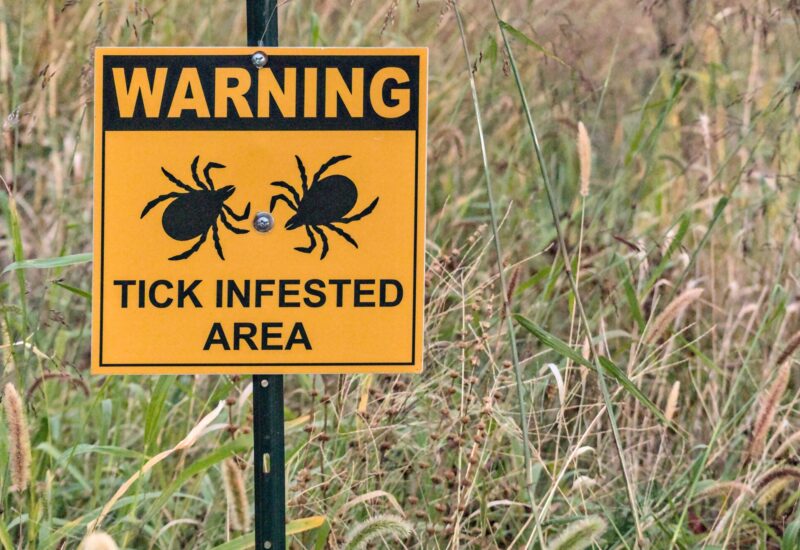Spring Pest Control for New Homebuyers

Spring has almost sprung, and with it comes the emergence of many common household pests. As a new homeowner, your excitement over your new beginning and all the possibilities your property offers could quickly be overshadowed by a pest infestation.
All too often, pest control is used as a reactive tool to treat infestations once a problem becomes obvious. However, preventive services, routine maintenance, and a new home pest inspection are more valuable approaches than many new homebuyers realize.
Your new home is one of your greatest investments. Let’s explore ways you can proactively manage common spring pest issues throughout the region, which sees its fair share of pests all year long. With more than four decades of experience serving Massachusetts, Connecticut, Rhode Island, and New Hampshire, Catseye Pest Control understands what you’re facing. Learning how to deal with pests from the beginning can save you both stress and money later.
Inspect Your Property Before Spring
Getting started ahead of the season can help ward off potential problems before they begin. Ideally, you want to arrange a new home pest inspection before you close on your new home. Beyond the standard home inspection, this essential step can make all the difference in making sure your experience as a homeowner goes as smoothly as possible.
Pest control professionals will look for the presence of potentially catastrophic pest infestations, including termites. These wood-chewing, destructive pests create billions of dollars in damage to properties annually. Homeowners insurance policies typically don’t cover that type of damage, which is why getting a pest inspection is so critical.
Proactive Seasonal Pest Control
Once the deal is done and you have closed on your home, your pest journey isn’t over. Although pests of all types are active year-round, many begin emerging as New England’s weather starts warming up in spring. That’s why a spring inspection is particularly helpful for both new and established homeowners.
Performing a rigorous visual inspection, indoors and outside, can help you spot potential entry points and signs of a possible infestation.
Look for:
- Gaps and cracks in the foundation
- Openings in siding joints and around utility lines
- Gaps under doors or around windows as well as broken screens
- Exposed vent openings, which can be covered by wire mesh or a similar barrier
Clean and Declutter
Inspecting your property is an excellent starting point. It will give you a lot of valuable information and help you become familiar with your new home. Beyond performing an inspection, cleaning and decluttering is another powerful preventive strategy. It seems simple, but it can be challenging when you’re in the middle of a move. The more you can do to remove potential sources of food and shelter for pests, the more you can reduce your chance of an infestation.
Kitchen
The kitchen can be like a “welcome” sign to unwanted pests. Food, including pantry goods, can attract hungry scavengers in search of their next meal. Likewise, dirty dishes, crumbs on counters and flooring, and even exposed pet food can attract pests of all sorts.
- Store all food, including pet food, in rigid, airtight containers.
- Regularly remove the trash and keep it in tightly lidded containers.
- Routinely wipe down counters, appliances, and stovetops.
Remove Clutter
Pests seek hidden, out of the way places to hide and nest. Clutter offers ample shelter and can disguise pest activity for weeks, months, or even longer. Go through moving boxes promptly and remove them to avoid attracting and harboring pests. Eliminate overcrowded cabinets, piles of clothing, and stacks of paper. Taking time to eliminate clutter now can save you a lot of headaches and hassle later.
Vacuum Regularly
Vacuuming is an underrated pest prevention strategy. Not only will vacuuming remove dust, dirt, and pest-attracting food particles, but it will also reduce the amount of pet hair and lint that can attract fabric-loving pests like carpet beetles. Additionally, vacuuming can remove pests, including mites, stink bugs, and millipedes, along with shed skin and egg casings. This will provide a start on treatment if it’s needed and eliminate debris to make pest control treatments more effective once they are applied.
Secure Your Outdoor Space
Your indoor space is important, but the great outdoors also plays a critical role in your new home’s defense against pests. Getting rid of outdoor clutter is a critical step. Sealing any gaps, cracks, or openings that provide pests with an “in” is equally essential. Depending on how prone your new home is to pests, rodents, and wildlife intruders, you might consider investing in a permanent solution like Cat-Guard Exclusion Systems. These long-term barriers offer chemical free, humane protection that keeps pests out.
Trim Vegetation
Trimming trees and shrubs will help keep your plants healthy. It also helps ensure that limbs remain a minimum of six feet away from your home’s exterior walls. By doing this, you can reduce the odds of many pests, including rodents, trying to scamper into your new home. Likewise, keeping the lawn regularly mowed will make it less of a shelter for ticks and other pests who would hang out in tall grasses.
Clean Gutters
Clogged gutters provide a prime breeding ground for many pests, including mosquitoes. Additionally, gutters can offer shelter to other pests, including rodents and birds. Keeping gutters clean and free-flowing helps reduce the risk. It also ensures your gutters work properly, which further protects your home’s structural integrity.
Store Firewood Away
You might be surprised by the number of insects and other pests that your firewood could be harboring, including wood boring beetles, carpenter ants, spiders, and rodents. To minimize the risk of these pests finding their way into your home, store firewood at least three to five feet from the outside of your home.
Inspect and Repair Screens
There’s nothing like getting a little fresh spring air into your home. Unfortunately, if your windows or door screens aren’t intact, you could inadvertently invite flies, mosquitoes, and other nuisances to come inside.
Schedule Professional Pest Control
As a new homeowner, one of the best things you can do for yourself is rely on trusted professionals. Effective pest control and prevention isn’t entirely a DIY proposition. Experts like Catseye’s trained, licensed technicians know exactly what to look for and can offer valuable advice about the preventive steps you can take. Additionally, you can opt for targeted services like pest control for bees, wasps, and hornets to keep your outdoor spaces pest-free.
Be Mindful of Common Wildlife
Wildlife viewing can be great fun — unless that wildlife is lounging around under your roof. The region is home to many species of wildlife, including bats, mice, rats, squirrels, skunks, and groundhogs that can wreak havoc both inside and out. Some wildlife will damage structures and gnaw on wires. Others may pose a health risk and spread dangerous germs. Keeping your home and outdoor spaces clean and sanitized and storing trash in wildlife-proof receptacles can help reduce nuisance wildlife.
Practice Responsible Gardening
Additionally, it’s helpful to keep debris, mulch, and wood chips away from your home and frequently enjoyed outdoor spaces. It’s natural to be excited about all you can do with your new outdoor spaces, but keep in mind that your gardening approach can help or hinder your pest prevention plan. For example, overcrowding your plant beds may add a lush look, but it also offers easy shelter for rats and other pests. You might also consider incorporating some pest-repelling plants in the design. For example, lavender and citronella grass repels mosquitoes and other insects.
Contact Catseye for a Partner You Can Trust
Your new home deserves the very best. Catseye views each customer as unique and provides a free, detailed inspection and customized treatment plan. From the routine monitoring incorporated with our Platinum Home Protection plan to outdoor services like our Organic Tick and Mosquito Control Program, we have you covered.
Contact us today to learn more about how we can help safeguard your property.






